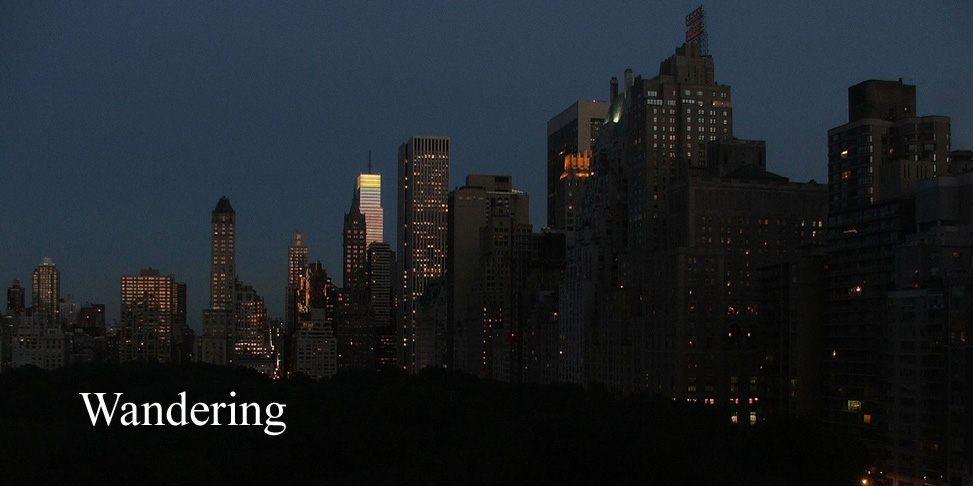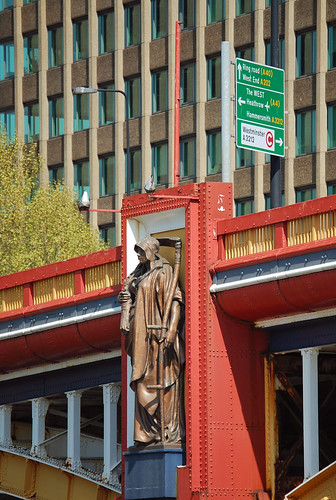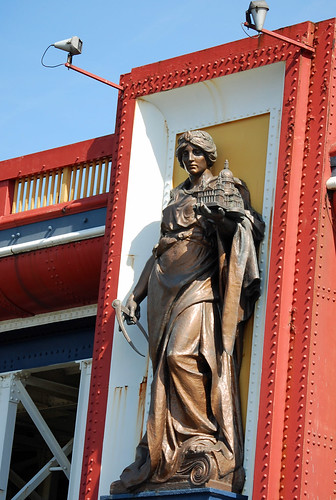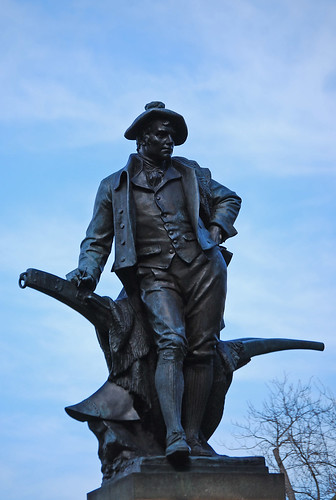
The ABC has a program called The Philosopher's Zone which is often worth hearing. A couple of weeks ago there was a discussion on the morality of ethicists. Apparently, they steal library books.
I learned about ethics from Professor Alan Stout (whose childhood was spent in St. Andrews and who taught at Edinburgh before moving to Sydney). He talked quite a lot about honesty as an important factor in personal relations and social cohesion. I can't begin to imagine that he had any library book that was as long as a day overdue.
One of the speakers on the Philosophers' Zone was Eric Scwitzgabel from the Department of Philosophy at the University of California, Riverside, who said:
I'd had a number of philosophers tell me anecdotally when I first started thinking about moral behaviour of ethics professors that they'd noticed that ethics books were more likely to be missing from academic libraries. So I decided to test that empirically. So what I did was, I looked at the library holdings in philosophy at I think it was about 31 leading academic libraries in the United States and in the United Kingdom, and compared the rates at which ethics books were missing, compared to non-ethics books in philosophy that were comparable in age and popularity.
So what it turned out was across the spectrum, ethics books were more likely to be missing.
There was no reason to suspect that this was a hoax of some kind; but there must be some limits to empirical testing. So just in case it's just a fiction, I note here that I have entertained the possibility.
The project had a theoretical element as well:
Yes, I guess there are two versions of that hypothesis. One would be a lot of professors go into ethics because they maybe don't have the same intuitive gut moral sense that other people have, and so they have to compensate for that by thinking rationally about things, than a lot of people would respond to much more naturally. Now I don't know if that's true or not. If it is true it would be nice if we could think of a way to measure that.
It was a coincidence that, shortly after hearing this, I came across Isabel Dalhousie. She is fictional. She edits the Review of Applied Ethics and is the protagonist of the Sunday Philosophy Club novels by Alexander McCall Smith. I had been looking for something set in Edinburgh to read. I knew about Ian Rankin, but after looking at a few pages of an Inspector Rebus novel in a shop decided it was not what I was after. Isabel sounded promising so I looked for her in the bookshop at Cammeray which had only the second book of the series, Friends, Lovers, Chocolate, which I bought and took to read while eating lunch in the adjoining Simmone Logue cafe. The only table available was in the window looking out onto Miller Street and the expressway entrance.
I mention this because there is an interesting tic or repetition in the story telling, it is that Isabel and her friends are seated by the window of any cafe or restaurant they enter.
While it is true that I bought the book to reminisce about Edinburgh, it was a shock to find that it opens with a character making his annual visit to the grave of the poet Robert Fergusson in the Canongate kirkyard. A grave I had visited as recently as 13 May last.

When Robert Burns visited Edinburgh in 1787, he found that Fergusson had been buried in an unmarked grave. He commissioned the gravestone which we can now see there. The architect engaged to make it, named Robert Burn, took two years to erect it . Burns, accordingly, took a further two years to pay for it. He said:
"Considering that the money was due by one Poet for putting a tombstone over another, he may, with grateful surprise, thank Heaven that he ever saw a farthing of it."

Robert Louis Stevenson was concerned about the condition of the grave as he found it, and intended to restore it, but I don't think he did. I tried to find out more by chatting to the gentleman on duty in the front porch of the church.
" Ah, Jamie Fergusson" he said.
Not a promising start. He did have a copy of a guidebook to the graves of Edinburgh but this said nothing of Stevenson's plan.
Friends, Lovers, Chocolate was probably written before the statue of Fergusson by David Annand was placed outside the Canongate Kirk in October, 2004, as one guide books puts it, striding away from his grave. It is a very moving tribute to an energetic poet who died at the age of only 24 in 1774 .
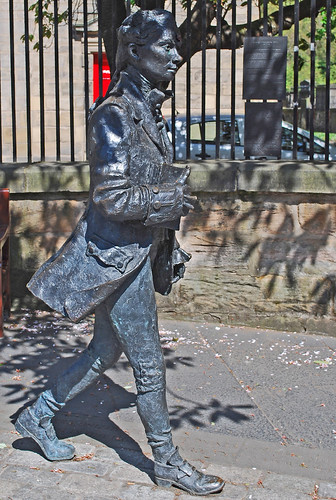
Auld Reikie, wale o' ilka toun
That Scotland kens beneath the Moon;
Where couthy chiels at e'ening meet
Their bizzing craigs and mous to weet;
And blythly gar auld Care gae bye
Wi' blinkit and wi' bleering eye:
Owr lang frae thee the Muse has been
Sae frisky on the simmer's green...
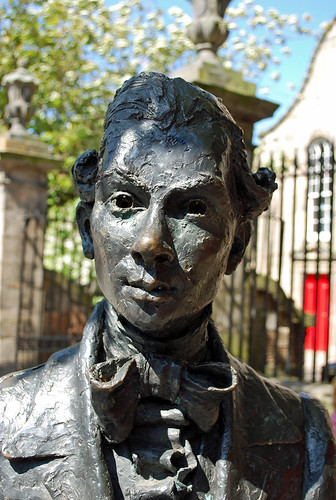
Isabel Dalhousie is not only an ethicist. She is a music lover and makes large anonymous donations to Scottish Opera. She has an adverse opinion of the lists of donors which appear in theatre and concert programs.
Almost as soon as she is introduced to the narrative she is off to a concert at Queens Hall. It is explained that it was once a kirk, hence the high straight backs on the seats to ensure that members of the congregation assumed a correct posture. She avoids these seats and seeks out the more modern chairs placed in the centre.
I didn't know the history of the hall or the nature of the seats when I arranged to hear a concert there last December. I had heard the violinist Jack Liebeck at the Townsville chamber music festival and thought it something of a coincidence that he was playing in Edinburgh at the time of my visit. I was accompanied by a group of impecunious students; and not being aware of Isabel's views, we found ourselves in a neat row in the same posture improving seats which had earned Isabel's disapproval.
The concert was given by the Scottish Chamber Orchestra, (also mentioned in the novel) and included Points of View a new work by Scottish composer Thea Musgrave, who was interviewed before the performance.
She mentioned a dream she had in the 1960's in which orchestral players stood in their places and challenged the conductor. This gave her the idea of requiring players with a solo passage to stand while playing.
The orchestra also played a concerto grosso by Handel and Mozart's Haffner symphony. Jack Liebeck was the soloist in the recent violin concerto of Magnus Lindberg. This is an exciting piece which I have heard again on CD with Lisa Batiashvili accompanied by the Finish Radio Symphony. There are some reminders of the Sibelius concerto in the work I think: maybe just a feeling of the vast icy wastes of Scandinavia. Looking for some confirmation of this, I found the program note mentions "a momentary echo of Sibelius, perhaps," towards the end of the concerto.
Jack Liebeck is a violinist whose playing of more romantic pieces has an intense emotional edge which only a few can achieve; and though I was disappointed not to hear a work which might have allowed this to emerge, I was grateful for the introduction to Magnus Lindberg's concerto.
I'm pleased Isabel Dalhousie wasn't there. She is an ethicist, as I mentioned, and takes ethics very seriously. From time to time she is motivated by a sense of ethical duty to take action. It seems to me that this motivation arises somewhat at random, but when it does, analysis and duty force Isabel to intrude. Never mind that the objects of interest are bereaved families - there are two of these in the book - her duty must be done.
I am reminded of Mrs Jellyby, though in her case chaos at home resulted from her preoccupation with distant good works. Noel Coward wrote a story called The Kindness of Mrs. Radcliffe, concerning a woman whose smothering helpfulness led to disaster in every case, and I am sure there are others.
Isabel is also inclined to make remarks which would have better been left unsaid, leading to complications in her private life. She is not an attractive figure.
So I wonder if Alexander McCall Smith had heard of the missing library books. Isabel seems to lack " the same intuitive gut moral sense that other people have " and could have become an ethicist for this reason. Where others act out of empathy, she constructs a moral rule and proceeds without regard to the consequences for her victims.
If you can stomach this kind of thing, Lovers, Friends, Chocolate is an enjoyable book to read, particularly if you want to reminisce about Edinburgh.
My other reservation is that the plot turns on coincidences.
![friends_lovers[1]](http://farm3.static.flickr.com/2522/3872125435_714ca658b7_o.jpg)
Postscript
16 February 2010
Last week Alexander McCall Smith himself appeared on The Philosophers Zone and talked about Isabel.
http://www.abc.net.au/rn/philosopherszone/stories/2010/2814063.htm
Quite contrary to what I have said about her, he seemed to agree that she was "nice":
Alan Saunders: This is an interesting aspect of her character. You're very good I think as a writer at creating nice people like Isabel and Precious who are still interesting, which is quite a difficult task for a writer I think. And part of what makes Isabel a nice person is something that you've already alluded to, the fact that she gets drawn into other people's lives, because she thinks that they have a moral claim on her.
Alexander McCall Smith: Yes, that is something which I find very interesting, and I suspect that most of us think about that problem from time to time. We think about it if we're walking along the street, and let's say we see a beggar, or somebody asks us for something. ...
Dear Isabel - I have no moral claim on you.
***
Jack Liebeck's CD on Sony, which is also on iTunes.
http://www.amazon.com/Violin-Concerto-Sonata-Sonatina-Liebeck/dp/B0024RA2LO/ref=sr_1_1?ie=UTF8&s=music&qid=1251705825&sr=8-1
Magnus Lindberg and Sibelius
http://www.amazon.com/Sibelius-Lindberg-Violin-Concertos-Magnus/dp/B000SNUMFC/ref=sr_1_1?ie=UTF8&s=music&qid=1251706054&sr=1-1
